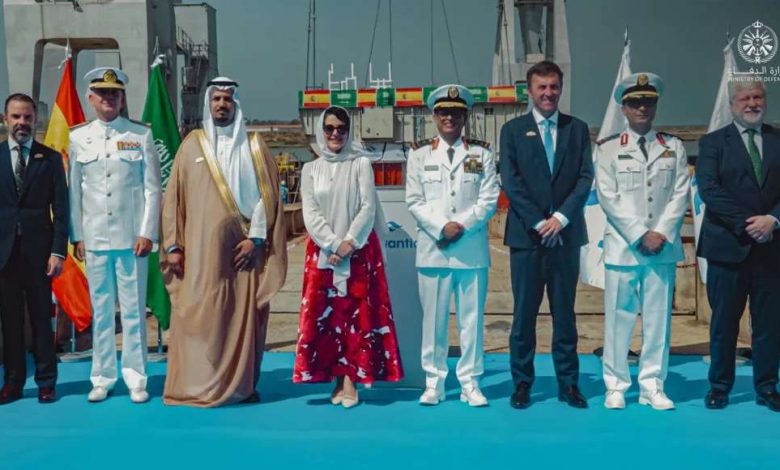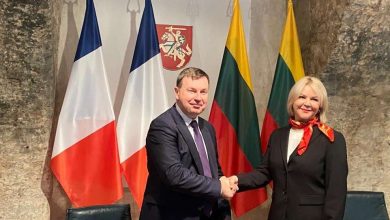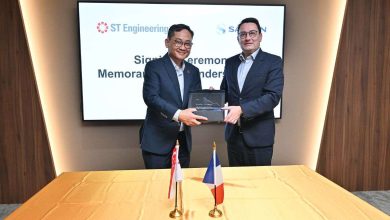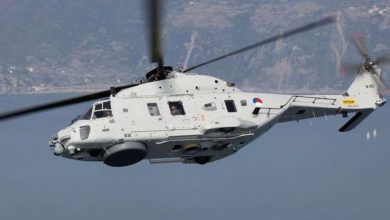
Navantia Innovations: Pioneering the Future of Royal Saudi Navy Corvettes
Navantia has reached a remarkable milestone in the construction of the second series of corvettes for the Royal Saudi Naval Forces (RSNF), with three ships currently in the production phase. On July 9, the San Fernando shipyard in Cádiz celebrated two pivotal events: the keel laying of the inaugural vessel in this fresh series and the initial steel cutting for the third unit.
The keel-laying ceremony signified the official start of fabrication for the forthcoming HMS Al-Madinah, which will mark the 571st ship built by Navantia. The event was attended by RSNF Vice Admiral Mohammed Abdlrahman Alghuraybi and the Saudi ambassador to Spain, Princess Haifa bint Abdulaziz Al-Mogrin. They were welcomed by Navantia President Ricardo Domínguez and Corvettes Division Director Alberto Cervantes.
The event featured the traditional signing of a commemorative plaque, which was subsequently welded to the vessel by a Navantia technician, alongside the symbolic cutting of the first steel plate for the third corvette. With these accomplishments, all three ships under the current agreement are now officially in production. While the first unit will be delivered from Spain, the second and third vessels are anticipated to be completed in Saudi Arabia, building on the success of the earlier five-ship AVANTE 2200 program.
Beyond ship construction, the new agreement includes comprehensive logistics support, extensive crew training, and operational sea evaluations with the Spanish Navy at Rota Naval Base. Navantia expects to train around 100 Saudi engineers as part of this initiative. The overall workload is estimated to reach four million labor hours and will generate up to 2,000 direct and indirect employment opportunities in the Cádiz region.
These cutting-edge corvettes, based on the proven AVANTE 2200 framework, are designed for a variety of tasks, encompassing maritime security, search and rescue operations, and the protection of critical infrastructure. The vessels will feature a range of sophisticated systems developed by Navantia, including the HAZEM combat management system—supplied through the SAMINavantia joint venture—the HERMESYS communications suite, and the DORNA fire control system. Key components will also include MTU-licensed propulsion engines, Schelde-licensed gearboxes, and the MINERVA integrated bridge solution.







